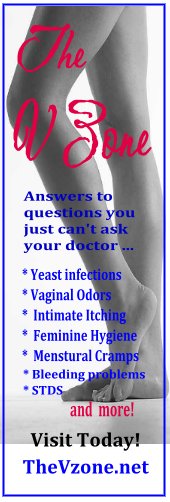
By Colette Bouchez
Could the number of years that pass between the start of menopause and the start of hormone therapy influence your risk of breast cancer? That’s the intriguing question posed by a new study, published this weekend in the Journal of the National Cancer Institute.
Here, researchers from England’s Oxford University examined epidemiologic data from over 1 million women, with the idea of calculating the risk of breast cancer in relation to the menopausal time frame during which these women began hormone therapy.
What the study found: Women who started hormone therapy five years or more after menopause, had little or no increased risk of breast cancer, regardless of the type of hormone therapy used , how long they used it, or whether or not they were overweight or even obese – both contributing risk factors to breast cancer.
By comparison, women who started hormone therapy just before, or soon after menopause began, were at greater overall risk for developing breast cancer.
“A new finding of this study, which has been little investigated previously, is that the interval between menopause and starting hormonal therapy has a substantial effect on breast cancer risk,” says lead study author Valerie Beral, FRS.
According to breast cancer specialist Julia A. Smith, MD, PhD, the study provides us with an important piece of the breast cancer risk factor puzzle.
“Large epidemiological studies like this one don’t necessarily give us answers, but they do help us understand where to look for answers – and this study has done that by reiterating the importance of timing in the relationship between hormones and breast cancer ,” says Smith, director of the NYU Cancer Institute Breast Cancer Screening and Prevention Program and the director of the Lynne Cohen Cancer Screening and Prevention Clinic for High Risk Women at Bellevue Hospital Center, and Breast Cancer Preventive Care Program at the NYU Clinical Cancer Center.
Indeed, Smith says that while we have long known that hormones definitely play some role in breast cancer, it’s in the understanding of how they interplay with many other factors in our life and our health that will ultimately give us the kind of information that we need to nail down each individual woman’s risk profile.
“What’s been clear is that there is a delicate and intricate interplay between all the sex hormones and the risk of breast cancer – so much so that I don’t believe we will ever find a single correlation that is the answer for all women; and this is why timing of hormone treatment has come to light as such an important issue – it gives us one more very important piece of the personal risk factor puzzle,” says Smith.
More study specifics
To arrive at their conclusions, the researchers looked at the health records of some 1,129,000 women in relation to their use of hormones and their relative risk of breast cancer. They compared women who did not use hormones, to those who did, and most importantly, calculated the timing at which hormone use began in relation to the start of menopause. They also looked at various types of hormone therapy, including estrogen only and estrogen/progestin combinations.
What they found: After adjusting for other contributing risk factors (such as family history) the researchers found that the relative risk for breast cancer was higher among those women who had begun hormonal therapy during the perimenopause ( the time leading up to menopause) or soon after menopause began, than it was for women who waited 5 years or more to start hormone therapy. This held true both for women using estrogen –only formulations, or for those using combination hormone therapies.
How great was the increased risk? In women who did not use hormone therapy the risk of breast cancer was approximately .30 % while the risk among hormone users was as high as .61% in those who started hormone therapy either before or within the first 5 years of menopause. The risk for those who began hormone therapy 5 years or more after menopause was almost equal to those who never used hormones.
The question that now remains, however, is why the timing of hormone therapy appears to have such a crucial impact. Smith believes it may be linked to the logic of not interfering with natural body changes while those changes are taking place.
“Giving a woman hormones at the start of menopause – a time when her body is not just experiencing a loss of estrogen and progesterone, but a decrease in many different hormones – may cause the kind of imbalance that ultimately increases her risk of not just breast cancer, but possibly other hormone related cancers,” says Smith.
“We need to ask ourselves how much do we really need to interfere with the body’s natural processes at a time when those processes are changing,” she adds.
Indeed, we have learned in the past that young women in early puberty, whose breasts are undergoing development, are at greatest risk for the ill effects of chemical pollutants tied to breast cancer. Similarly, it may be that when a woman’s body is undergoing similar kinds of hormonal shifts on the other end of the age spectrum, her breast cells may also be more susceptible to influence from outside factors, including hormone use.
“There are enormous complexities and so much we do not yet understand – but one key thing that is coming to light is that the timing of when in our natural life cycle we choose to supplement natural losses may play a critical role in the outcome, or the effects of what we are supplementing,” says Smith.
In an editorial that accompanied the study, Rowan T. Chlebowski, M.D., Ph.D., of Los Angeles Biomedical Research Institute at Harbor-UCLA Medical Center and Garnet Anderson from the Fred Hutchinson Cancer Research Center noted that the new research is critical since it provides substantial support for similar findings from the Women's Health Initiative (WHI) – a massive study of more than 1 million US women. He also added that the similarities between the patterns of breast cancer risk in both large groups of women increases the validity of both sets of results. This is particularly important in light of the fact that both groups of researchers used different methods of calculation, yet arrived at similar conclusions.
For the latest health, beauty and style advice for women over 40 subscribe to RedDressDiary - It's Free! And be sure to check out CheapChicDiary.com for money saving beauty and style tips! Originally published in the Examiner.com -Copyright 2011 ColetteBouchez All Rights Reserved
The owners or contributors to this blog may or may not benefit from the products and information featured herein.




































No comments:
Post a Comment